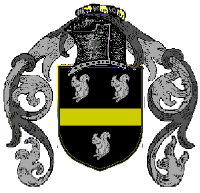| |

|
 |
|
 965 - 1014 (49 years) 965 - 1014 (49 years)
-
| Name |
King Of Denmark, Norway And England, Svend [1] |
| Suffix |
I |
| Born |
965 |
Of, Denmark  [2] [2] |
| Gender |
Male |
| Died |
2 Feb 1014 |
, Gainsborough, Lincolnshire, England  |
| Buried |
Hellig Trefoldigheds Kirke, Roskilde, Roskilde, Denmark  |
| Person ID |
I5696 |
My Genealogy |
| Last Modified |
21 Jan 2022 |
-
-
| Notes |
Biographical Text:
England was the preferred goal and largest source of income for the Vikings. The country was divided into a number of small kingdoms which were often at odds, a situation the Danes knew how to make the best of. In 835 they plundered the area surrounding the estuary of the Thames. These plunderings can be considered the beginning of Danish activities in England throughout the next few centuries. There were plunderings, conquest of land with subsequent settlement. The end was the conquest by Svend Tveskæg and Cnute the Great of the entire country at the conclusion of the Viking era.
In 865 a large army of Vikings planted itself in East Anglia where it began several years of war and conquest. The crucial event took place in 876 when the military leader Halfdan allocated land to his men in Northumbria. This gesture was repeated the following year in the kingdom of Mercia where the Vikings received land and became permanent settlers on farms. The rest of the army was given land in 879 in East Anglia. This meant the creation of Danelaw, the country living under Danish law and reign. Together with the royal quarters at York, the five towns of Lincoln, Stamford, Nottingham, Derby and Leicester became the strongpoints of the Danish reign.
In the south, in the kingdom of Wessex, the English King Alfred continued to reign. In 866 a peace treaty was concluded between the Viking King Guthrum and King Alfred on peaceful relations between the two groups of people. Apparently the Danes did not consider the peace treaty particularly binding since already in 892 the Danes once again tried to subdue Wessex. A large Viking fleet arrived from the Frankish empire to England and with this as their ally the permanently settled Danes attacked Wessex. The battle went on for four years without the Vikings managing to vanquish King Alfred whereafter the Danish army disbanded. King Alfred died in 899 but his descendants gradually recaptured the Danish possessions, and by the 920s Mercia and Northumbria were once more under AngloSaxon supremacy. Today the Nordic settlement in England is easily discernible in the many surviving geographical names. The Vikings had brought their own name custom from home and we have examples of a number of place names identical to those used in the North, among them by, toft and torp. Place names alone ending on by are known in the former Danelaw .
Through long periods of the 900s it was relatively peaceful along the west European and English coasts but by the end of the 900s hostilities returned. From 980 on sources tell of frequent raids and huge demands of silver for the marauding Vikings. In 1013 Svend Tveskæg subjugated all of England. He died in 1014 but in 1016 his son Cnute the Great reconquered power. King Cnute died in 1035 and with the conclusion of his reign stability in England was no more. The last Danish king occupying the English throne was Harthacnut who died in 1042.
As already said, it is not possible to discern Norwegians, Danes and Swedes from each other in the ships crews arriving at the west European coast and England. The crews were often a mixed lot but sources clearly show that the Danes dominated in raids on England while the Norwegians played the most prominent part in the northern English isles, the Isle of Man, in Scotland and Ireland.
|
-
| Sources |
- [S327] The Church of Jesus Christ of Latter-day Saints Ancestral File (TM).
- [S139] Genealogies of Royal Lines.
Kenneth O. Morgan, ed.. Oxford Illustrated History of Britain. New York: Oxford University Press,1984. Appendix: Genealogies of Royal Lines.
|
|
|
|